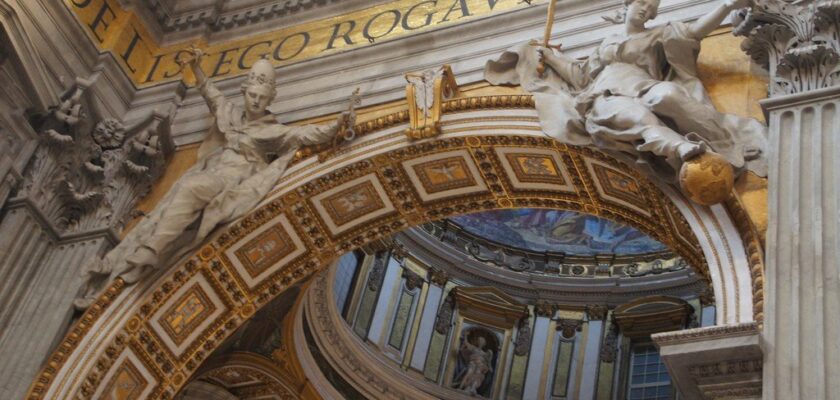St. Peter’s Basilica
St. Peter’s Basilica, the center of the Roman Catholic religion, is the second largest Christian church in the world. It is one of the most revered shrines and the most popular object of worship for pilgrims from all over Europe. It is located in St. Peter’s Square in Vatican City.
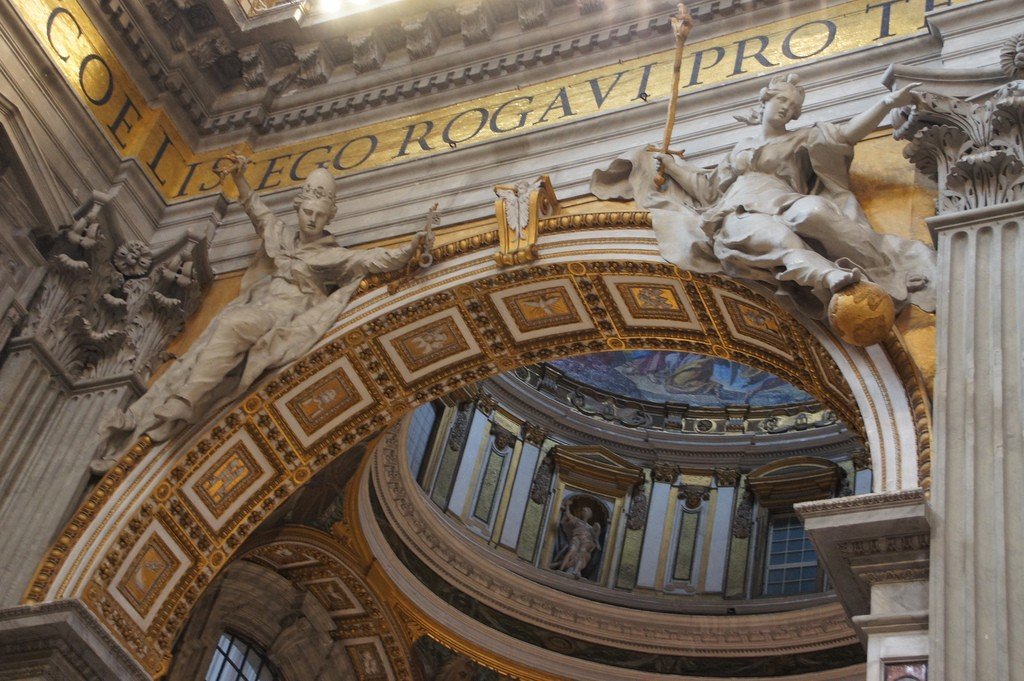
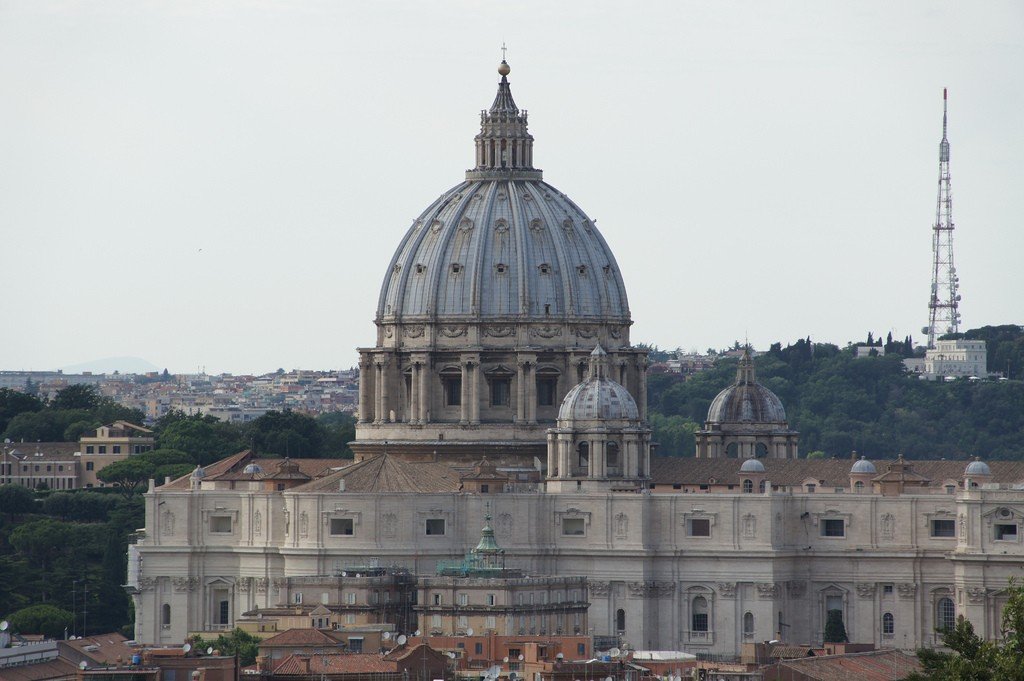
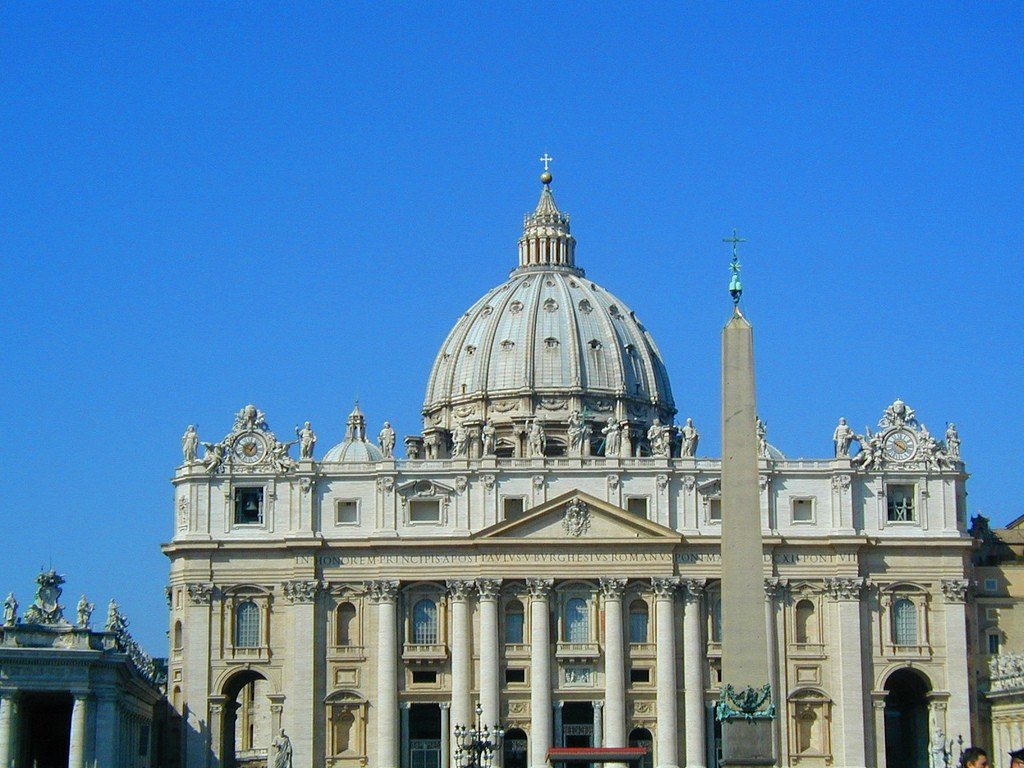
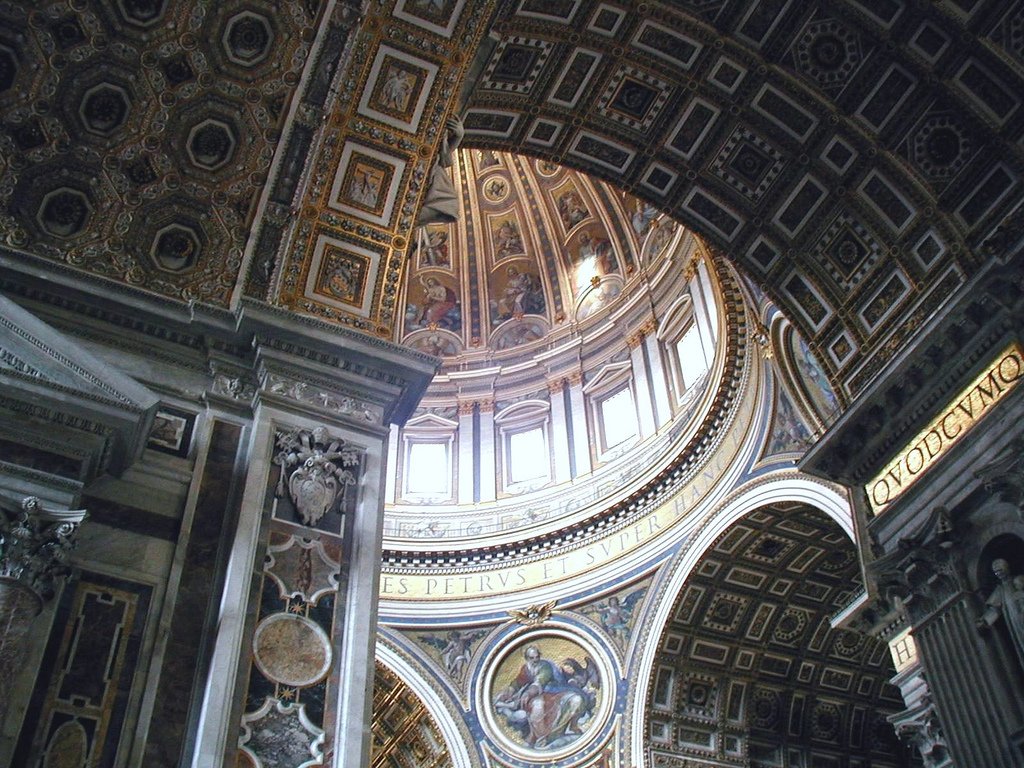
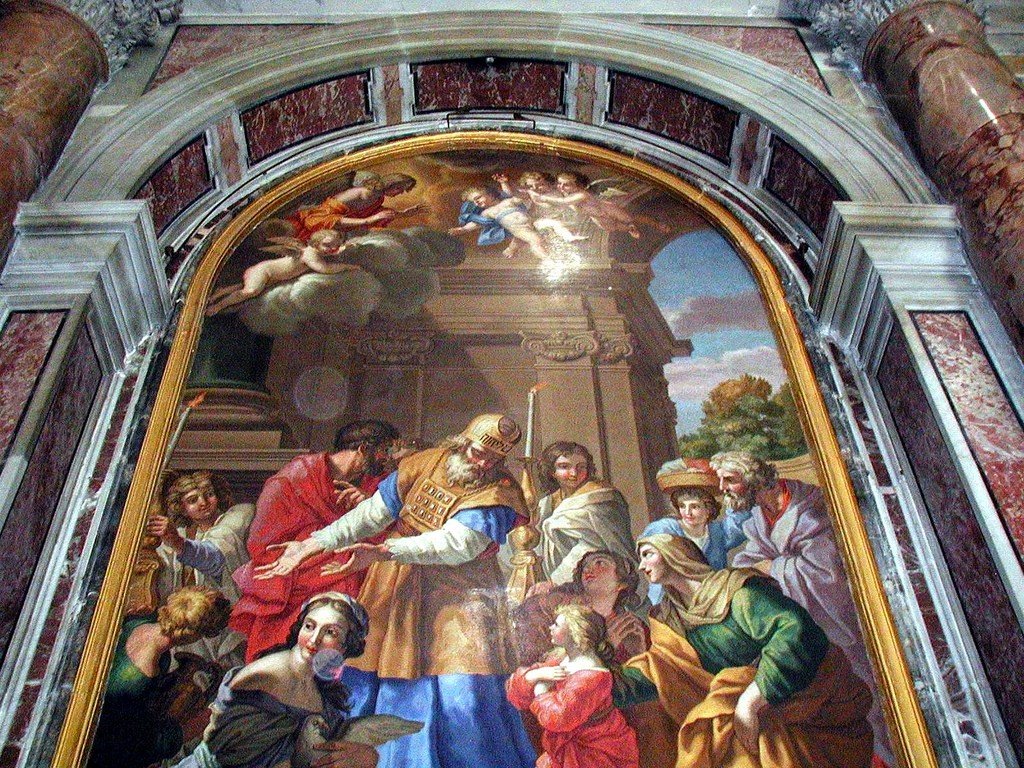
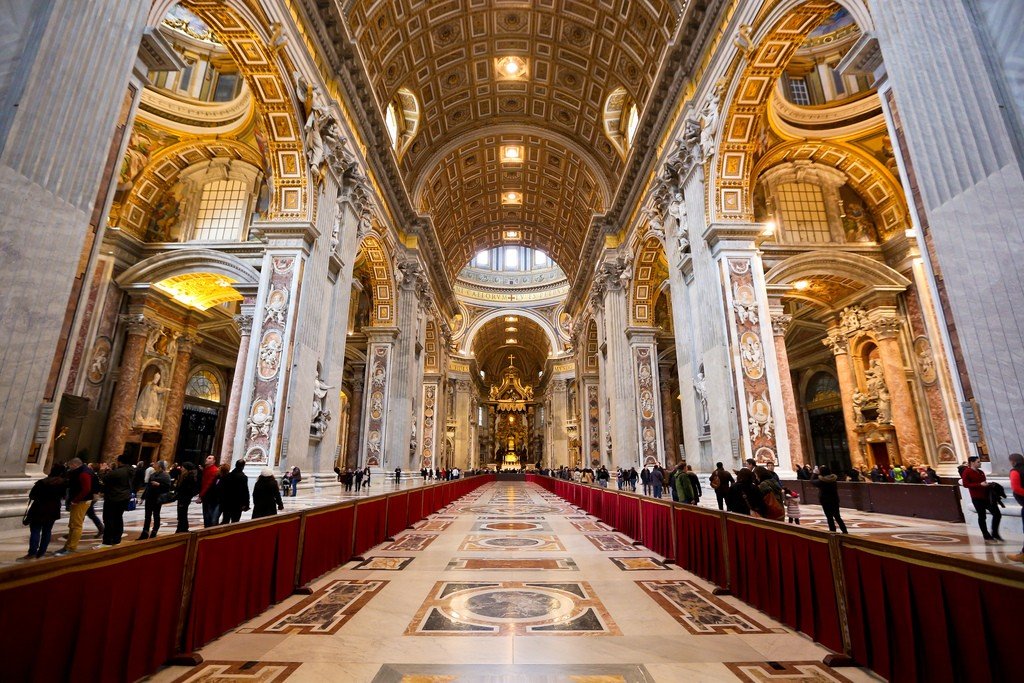
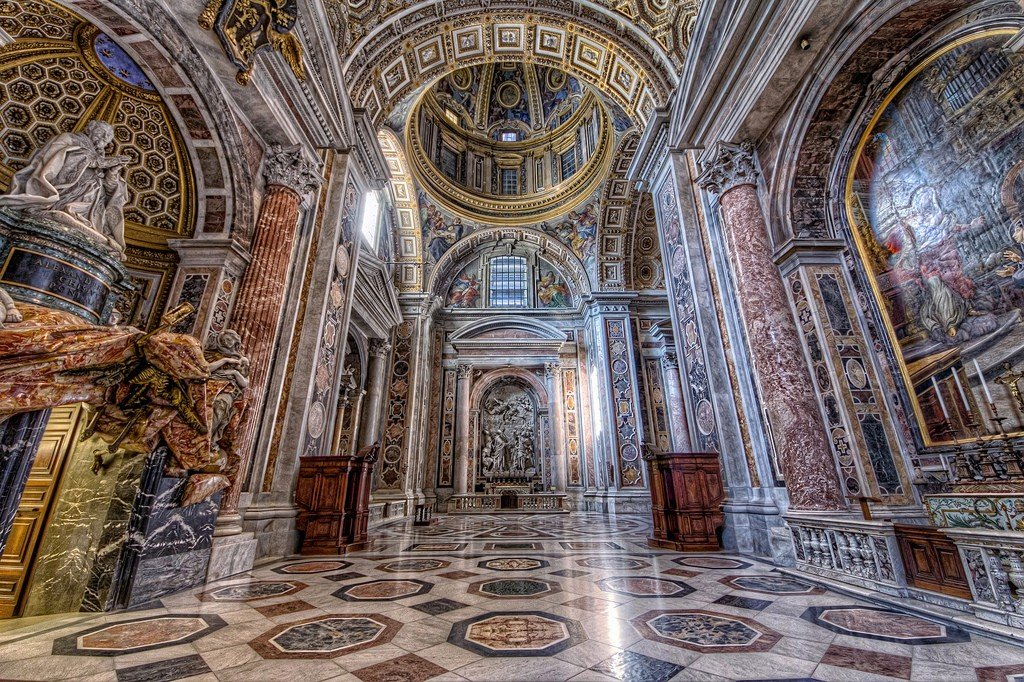
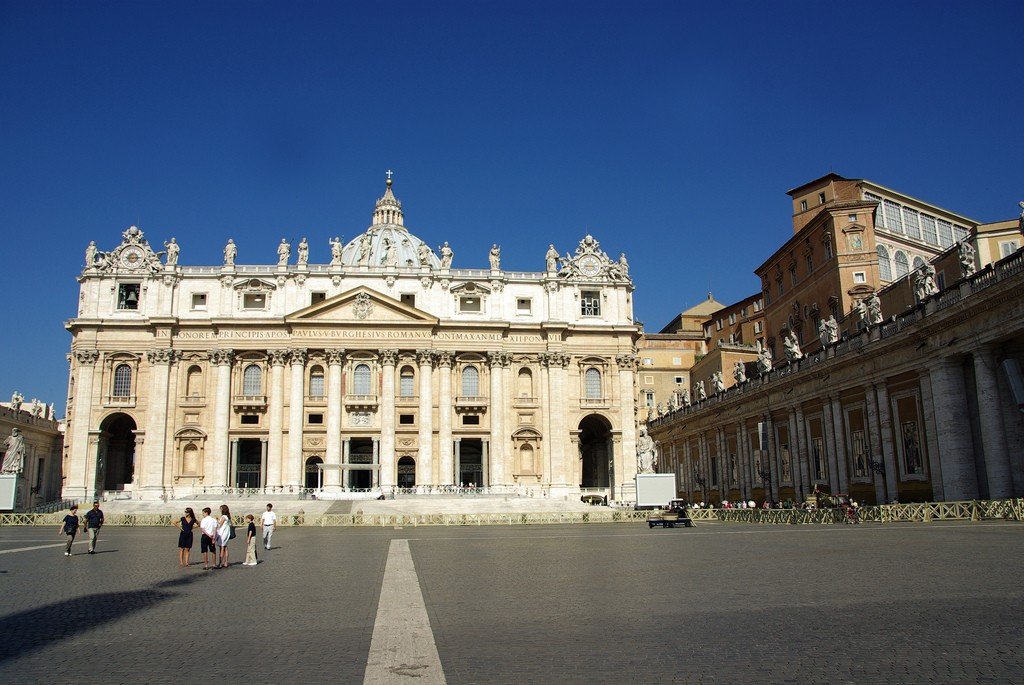
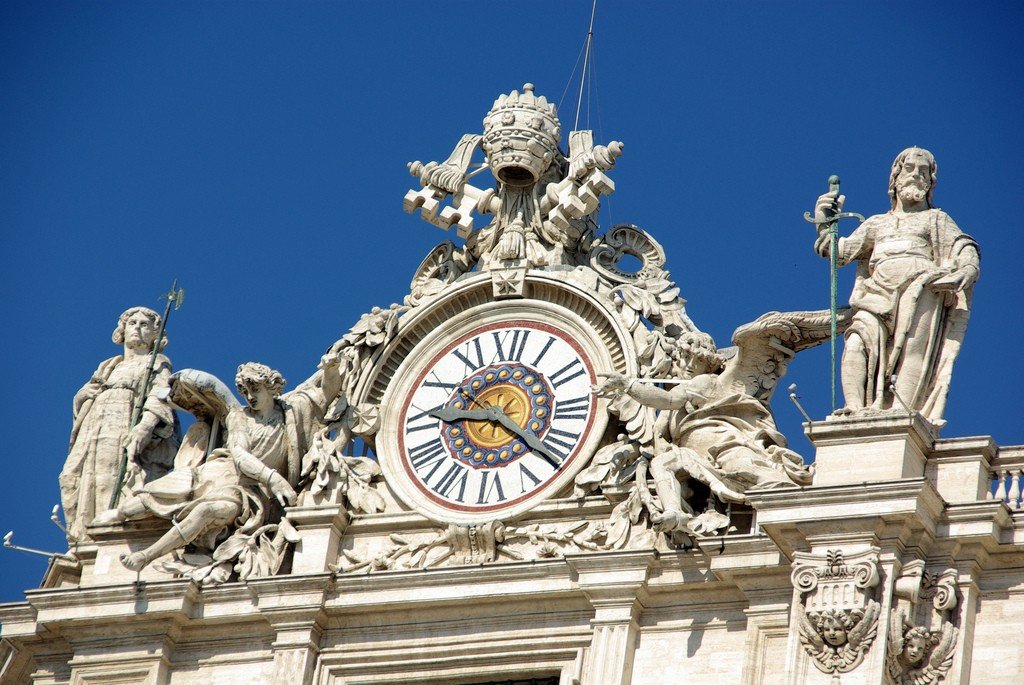
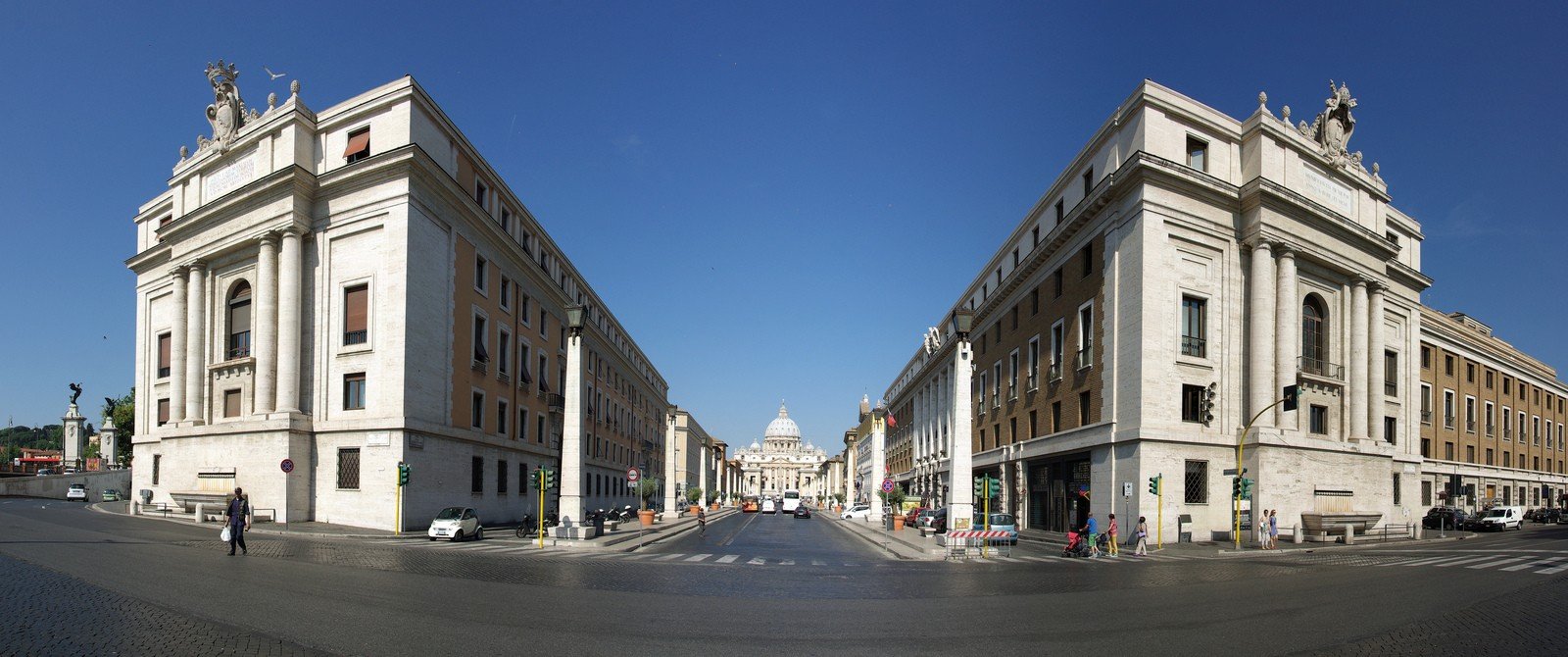
General Information
Over the course of a century and a half, many architects have been involved in the construction of St. Peter’s Basilica, often fundamentally altering the designs of their predecessors. Despite this, the cathedral makes a surprisingly coherent impression, its architecture and interior decoration radiating incredible dignity. The ensemble of the cathedral and St. Peter’s Square form a magnificent stage for the Pope’s exit and the representation of Christianity.
.
To reduce the significance of St. Peter’s Cathedral solely to its architectural merits is to forget its status as a Christian shrine and the role it played in the momentous turning point that marked a new stage in the development of Western art, architecture and culture as a whole. This temple is not just a historical and architectural monument. Within the walls of the main sanctuary of the Roman Catholic Church, the world’s art, history and spiritual development have fully manifested themselves.
.The cathedral is dedicated to the Apostle Peter, the first bishop of Rome, whose successors are considered all popes. Until the early 1990s, when an even larger church was built in the Republic of Côte d’Ivoire, St. Peter’s Cathedral was the largest Christian sacred building.
.
Opening hours:Daily. 9.00 – 18.00;admission is free.
.History
The first church of St. Peter was built under Emperor Constantine – a five-nave basilica, in front of which was a square framed by columns. The basilica was erected over the tomb of the Apostle Peter and consecrated in 326 AD
.The first St. Peter’s Cathedral was built in 324 when Emperor Constantine transferred the remains of the Apostle Simon Peter to Mount Vaticanus. To commemorate the sanctity of the site, he ordered a basilica with five altars to be erected there, just a pitiful precursor to the colossus that now stands in its place.
.
In the XV century. basilica, which existed for eleven centuries, threatened to collapse, and under Nicholas IV it began to expand and rebuild. Cardinally solved this issue Julius II, who ordered the construction of a huge new cathedral on the site of the ancient basilica, which was to overshadow both the pagan temples and the existing Christian churches, thus contributing to the strengthening of the papal state and the spread of the influence of the Catholic Church. The first stone of the cathedral was laid on April 18, 1506. The funds for the construction were obtained through generous trade in indulgences and levies from the territories subject to the church, called “St. Peter’s mites.”
.Bramante was the first “Renaissance man” to attempt to draw up blueprints for this new, unaccustomedly monumental House of God. After his death in 1514, Raphael (died 1520) took over the work, followed by da Sangallo and Peruzzi. Until 1546 the work was barely progressing because the overly ambitious architects could not find common ground. Each was only interested in leaving his imprint on the structure, and the endless changes in plans practically stopped construction.
.
In 1547, Pope Paul III entrusted the work to the 72-year-old Michelangelo. Simply put, he simply ordered the stubborn master to finish the construction. Michelangelo was forced to bow to such a firm will of the pope and took up the task. He worked on St. Peter’s Basilica until his death in 1564
.St. Peter’s Basilica was fully completed on November 18, 1623, when Pope Urban VII solemnly consecrated the church. It took almost 120 years to build the cathedral, during which time 20 popes – from Julius II to Urban VII – were replaced, each in one way or another trying to expand and make the monumental house of God even more grandiose. The list of masters, architects and artists whose skill and talent contributed to the glory of the magnificent temple includes names such as Bramante, Raphael, Bernini and, of course, Michelangelo.
.The interior of the cathedral
Inside, St. Peter’s Cathedral is stunning in its scale: 186 m long, height in the central nave – 45 m, and with the dome – and all 119 m. In the center of the main nave, floor plates contain the dimensions of the most significant cathedrals in the world, allowing us to compare them with the size of the cathedral. On the red porphyry slab of the Main Portal, where the former altar was, Pope Leo III placed the crown of the Roman Emperor on the head of Charlemagne on Christmas Day 800. At the fourth pillar on the right is a bronze statue of a seated St. Peter (13th century), whose right foot is polished with the kisses of the faithful.
.In addition to the main dome and eight side domes, the interior of St. Peter’s Cathedral is adorned with 800 columns and 390 colossal statues of tufa, marble, plaster, and bronze. There are 45 separate altars. Visitors enter the basilica through massive bronze doors. Nearby, there are “Holy Doors” which are only opened for the pope to proclaim a feast or holy year.
.Cathedral Dome
The cathedral’s 42, 2 m diameter double dome above the papal altar rests on powerful pillars, with statues of St. Helena, St. Veronica, St. Longinus and St. Andrew standing in niches between them. On the ring of the dome is a Latin inscription: “You are Peter, and on this rock I will build My Church …. And I will give you the keys of the kingdom of heaven.” Above the gallery inside the vestibule between the two layers of the dome, stairs lead up to the lantern, which offers a grand view of St. Peter’s Square, the Vatican and Rome (entrance in the left side aisle or to the right in the narthex).
.Papal Altar
Above the Papal, or High Altar, on four twisted gilded columns is a huge bronze canopy (ciborium), created in 1633 by Bernini at the request of Pope Urban VIII. In front of the altar, a double staircase leads down to the Confessio, the place where the tomb of the Apostle Peter is supposedly located. Another of Bernini’s masterpieces is the pulpit of St. Peter in the apse. The four Fathers of the Church support Peter’s episcopal chair, over the back of which two putti hold the keys and tiara, symbols of papal authority, and above them hovers the symbol of the Holy Spirit.
.Apsidus
The first chapel of the right side aisle houses Michelangelo’s great creation, the sculptural group Pietà, commissioned by French Cardinal Jean Bilaire de Lagrol (then 24 years old ) for his future tombstone (1498-1499). The young Mary holds Christ, who has been taken down from the cross, on her lap. Michelangelo left his signature on a ribbon on Mary’s chest. Of the many papal tombstones in the side aisles, the Baroque tombstone of Pope Alexander VII, Bernini’s (1672-1678) greatest dramatic creation, is particularly impressive. Surrounded by four figures of virtue, the pope looks on at his death.
The Vatican Grottoes (Sacre Grotte Vaticane), there descend from the columns at the intersection of the longitudinal and transverse aisles; they are a crypt built when the new basilica was erected. At that time the floor level was raised by 3.5 meters. Beneath the High Altar is a cancer with holy relics; Popes Pius XII, John XXIII, Paul VI and John Paul I are buried here. These grottoes to the Vatican’s German cemetery, which is to the left of the cathedral.
.Clothing:
Visiting in shorts, open-shouldered clothing and miniskirts is not allowed. The rules are equally strict for both men and women. Even if you have passed through the security representatives in St. Peter’s Square, the caretakers may not let you inside the museums and the Cathedral.
.
Facts
- Status: As it is the Pope’s ceremonial cathedral, it is hardly correct to call it a cathedral. .
- Dimensions: The basilica is 211 m long, 1,32 m wide, and 1,38 m high.
- Dome dimensions: The dome has a diameter of 42.34 m. Height from the lower edge to the cross ca. 43 m. .
Chronology
- 324: By order of Emperor Constantine, St. Peter’s Basilica with five altars is built on Mount Vaticanus. .
- April 18, 1506: The foundation stone of the new church is laid.
- 1514: The first leader of the work, the architect Bramante, dies.
- 1515-1546: The works are supervised by Raphael, da Sangallo and Peruzzi. .
- 1547-1564: Michelangelo takes over the construction of the cathedral. .
- November 18, 1623: Pope Urban VII consecrates St. Peter’s Basilica, which had been under construction for 120 years. .
